#] It was released posthumously in 2002 less than a year after his death
Explore tagged Tumblr posts
Text
Joey Ramone - Don't Worry About Me
#Joey Ramone#Don't Worry About Me#Label:#Sanctuary Records#Released:#2002#Genre: Rock & Roll Punk#Don't Worry About Me is the debut album released by Joey Ramone as a solo artist#] It was released posthumously in 2002 less than a year after his death#USA
30 notes
·
View notes
Text
23 years ago today
'Don't Worry About Me' is the first album released by Joey Ramone as a solo artist, released posthumously on this day in 2002, less than a year after his death.

34 notes
·
View notes
Text
An Appreciation of the Life and Work of Joanne Kyger

The bio in the back of On Time, Joanne Kyger’s collection of poems written between 2005 – 2014, describes her as, “One of the major women poets of the SF Renaissance.” That is, of course, correct, but I would make a case for removing the word “women” from the sentence. While I’m sure the intention of including that gender signifier was to emphasize the importance of her position as a woman in what was largely a man’s world/boy’s club, its placement before “poets” in the sentence diminishes rather than enhances her standing. It reeks of “pretty good for a girl” condescension, unintended as that may be.
Joanne Kyger was one of the major poets of the San Francisco Renaissance coterie, period. She was a woman. She was a woman who, despite operating in what was largely a man’s world/boy’s club, became a major member of that club. But even that SF Renaissance signifier, while more accurate than the Beat Generation designation emphasized in her New York Times obituary and useful in placing her in time and place and lineage, seems unnecessarily limiting. In his introduction to As Ever, her selected poems released in 2002, Kyger’s longtime friend and fellow poet, David Meltzer, says of the atmosphere in the late ’50s when they first met:
“It’s important to remember (or realize) that those days were before literary academicians freeze-framed them into ‘movements or ‘generations.’ The slickest, surest way to defang dissent and creative doubt is to accept it and (ugh) incorporate it into glossy narratives circulated throughout institutional castle culture. (A big irony many tapdance around.) Even then, Joanne was a thoughtful and thinking (and self-effacing) poet of deep innate knowing. Her early work was distinctly complex, personal, and resistant to expectations.”
So how about something like this: Joanne Kyger was a thoughtful and thinking and self-effacing poet whose distinctly complex and personal work made her a major figure in the SF Renaissance/Beat Generation orbit. That self-effacing quality is what gives poems such as “Town Hall Reading With Beat Poets” and “Bob Marley Night Saturday Downtown” and “Fact Checking” their charm. Her poems are at once deep and learned yet casual and conversational. They are also often quite funny. She comes across as a poet who took her poetry seriously while not overly-concerned with being taken seriously herself.
There is more to her poetry than self-deprecating humor, of course. A great sense of reverence is on display throughout her work when engaging with mythological themes, her Zen Buddhist studies, interactions with the natural world, and considerations of the lives and deaths of friends. From the poems in her first book, The Tapestry and the Web, published in 1965, to the late work collected in On Time, Kyger’s writing displays a marvelous way of finding the mythic in the mundane and revealing the mundane in the mythic. Here is how “Pan as the Son of Penelope,” probably her best-known poem, begins:
Refresh my thoughts of Penelope again
Just HOW solitary was her wait?
I notice Someone got to her that
barrel chested he-goat prancing around w/ his reed pipes
is no fantasy of small talk. More the result of BIG talk
and the absence of her husband.
In his thought-provoking essay, “The Great(ness) Game,” David Orr discusses how Elizabeth Bishop’s stature has risen posthumously while her friend Robert Lowell’s once-towering reputation has been in decline. It would not surprise me to find Joanne Kyger’s stature ratcheted upward by a similar recalibration of reputations in years to come while those of some of her better-known male peers and predecessors in the SF Renaissance/Beat pantheon are demoted. As a stunningly lovely, yet delicate, voice like Billie Holiday’s or Karen Dalton’s would be difficult to hear when a big booming voice like Pavarotti’s was bellowing nearby, so, too, a subtle poetic sensibility, like Joanne Kyger’s, can get drowned out when there’s a big personality like her friend Ginsberg Howling nearby. Not to mention Duncan and Spicer and Snyder and Whalen and McClure and Berrigan and others. She moved in serious circles.
But life is life and death is death. Reading the books of dead poets after their time has passed and their legends have cooled is a different thing than reading the living. Sometimes the poet of the moment isn’t a poet for the ages. Tastes change and change again. Who knows what the literary landscape of the late Twentieth and early Twenty-first Centuries will look like to readers a hundred years hence. In his essay, Orr quotes a passage from J. D. McClatchy wondering about how Bishop could be claimed as the favorite predecessor poet of contemporary poets as varied as John Ashbery, James Merrill and Mark Strand. Orr takes a stab at an answer: “It’s possible, one might answer, because Bishop was a great poet, if we take ‘great’ to mean something like ‘demonstrating the qualities that make poetry seem interesting and worthwhile to such a degree that subsequent practitioners of the art form have found her work a more useful resource than the work of most if not all of her peers.’” I predict that Kyger’s work will be similarly deemed a useful resource by poets to come.
The Times obituary includes Kyger’s poem “Night Palace” but, for some reason, they did not format the poem, which was composed in projective breath units and spaced on the page in the composition by field manner, as written. That’s a shame. The spacing, in large part, makes the poem the poem it is. It’s not unusual to come across poems laid out in the composition by field manner for which reformatting them with a standard left margin justification doesn’t detract much from the poem. Sometimes it’s little more than ornament. This is not the case with “Night Palace,” a fine example of how much emotional information can be conveyed by spacing and placement on the page in the hands of someone who fully understands the approach.
Her poem “Elegant Simplicity” written May 22, 2007 ends:
Demons are more or less human in appearance Monsters are more animal like
The first soul or spirit that resides in a person is immortal
The second soul is the animal spirit you acquire at birth with a real counterpart animal spirit roving around in the world.
If it dies, you die That’s it.
Joanne Kyger’s real counterpart animal spirit died in March of this year, so that was it, but her poetry will live on and, I suspect, gain greater prominence in the years to come.
By Steve Potter. Previously published in The New Black Bart Poetry Society’s Parole Blog.
https://thenewblackbartpoetrysociety.wordpress.com/2021/03/21/set-four/
5 notes
·
View notes
Text
Hollywood Biggest Celebrity Scandal


Tim Allen arrested for dealing cocaine, 1978 Before he became everyone’s favorite Santa Clause (or the handy tool man, or Buzz Lightyear), Tim Allen was caught dealing drugs—specifically cocaine. He was arrested for possession of nearly a pound-and-a-half of cocaine at the Kalamazoo/Battle Creek International airport in Michigan in 1978. He spent 28 months in a federal prison, as opposed to a life sentence, for giving up the names of other drug offenders.

Marvin Gaye murdered by his father, 1984 The soul singer of the 80s, known as the Prince of Motown, was shot and killed by his father, Rev. Marvin Gay Sr. after an altercation. (Note: The "e" was added to the singer's stage name.) Gaye's brother Frankie, reportedly held him in his final moments. In his memoir, Frankie wrote that his brother's last words were, "I got what I wanted…I couldn’t do it myself, so I made him do it."
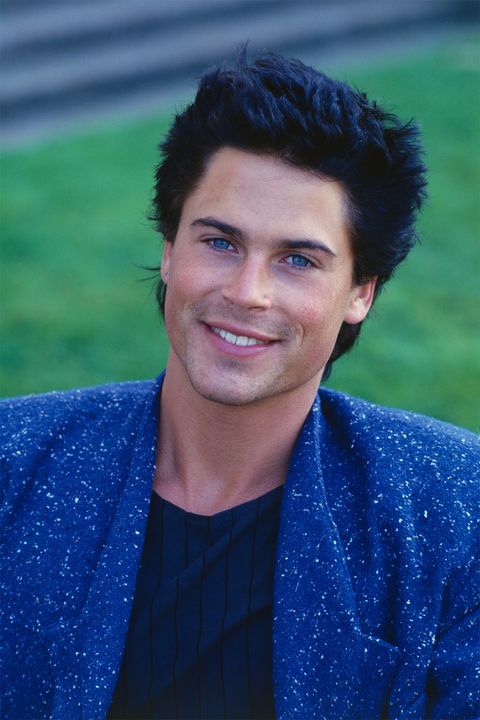
Rob Lowe made a sex tape with a 16-year-old, 1988 A video of the then-24-year-old Parks and Rec star having sex with two women was reportedly recorded the night before the 1988 Democratic National Convention in Atlanta. (Side note: Lowe was largely into politics before his acting career took off.) When it surfaced, it was discovered that one of the girls was only 16 years old. Her mother slapped him with a civil lawsuit, and he ended up settling, paying her a large sum of money and doing 20 hours of community service.
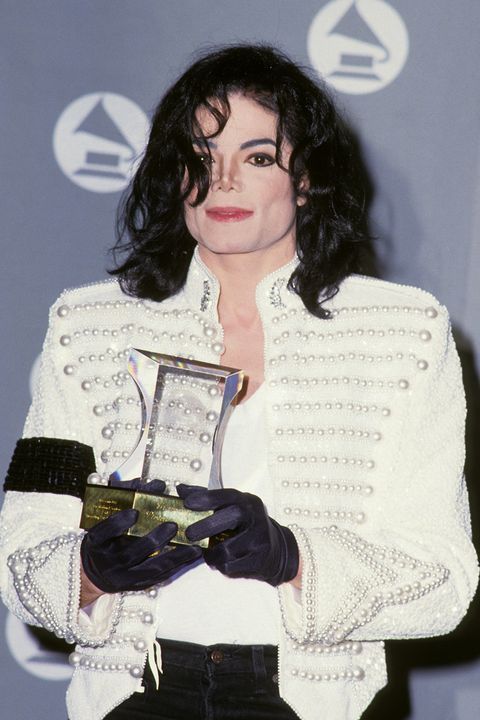
Michael Jackson accused of sexual assault, 1993 In 1993, Michael Jackson was accused of sexually assaulting a 13-year-old boy named Jordan Chandler. After the accusations went public, Jackson cancelled his tour due to health issues from the scandal. He later settled the case, paying the Chandlers $23,000.
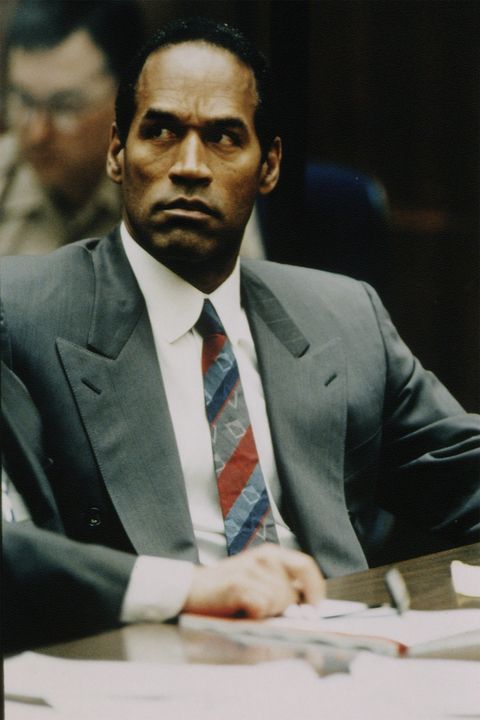
O.J. Simpson arrested for the murder of his wife, 1994 Football star O.J. Simpson was arrested for the murder of his ex-wife Nicole Brown Simpson and her friend, Ronald Goldman, following a now-iconic car chase through Los Angeles. After 15 months in jail, Simpson was famously acquitted of both counts, thanks in part to his lawyer's "if the glove doesn't fit, you must acquit" line. In 2008, 13 years later, Simpson was convicted of robbery and kidnapping for a separate incident.

Hugh Grant caught with a prostitute, 1995 In 1995, Hugh Grant paid a sex worker to give him a blow job on the Sunset Strip but the two were found by police and the Four Weddings and a Funeral actor was arrested for "lewd conduct" in a public place. At the time of his arrest, he was with his longtime girlfriend Elizabeth Hurley, who tried to work through the incident. She ended up leaving Grant five years later.

Prince Charles and Princess Diana divorce, 1996 After years of marital strain and four years of separation, Prince Charles and Princess Diana formally divorced in August of 1996. Their marriage was tainted by controversy, especially at the end, with both sides cheating—Charles most famously with long-time love and now-wife, Camilla Parker Bowels. As the future King of England, Charles' status as a divorcee is particularly scandalous.

Princess Diana killed in a car accident, 1997 Less than a year after she and Prince Charles got divorced, Princess Diana was killed in a car accident in Paris after being chased by paparazzi—and it was rumored that the future king planned her death. Later a letter from the princess to her former butler was discovered. In it she wrote that she felt Charles was setting up an incident so he could marry Tiggy, the former nanny of Princes William and Harry, but many believe the note was forged and an inquest concluded in 2008 found no wrongdoing on the part of the royal family.

Bill Clinton's affair with Monica Lewinsky made public, 1998 In 1995, former President Bill Clinton began having an affair with a then-21-year-old Monica Lewinsky, who was an unpaid White House intern. The huge scandal was made public in 1998, and Clinton denied that he had "sexual relations" with Lewinsky. He later admitted that he did have an affair with her, which contributed to his impeachment in 1999.

Marilyn Manson's music blamed for the Columbine shooting, 1999 After one of the deadliest schools shootings—in which two seniors murdered 12 students and one teacher at Columbine High School—people pointed the finger at musician Marilyn Manson. It was thought that the two students loved Manson and his music, and it was said that the singer's songs inspired them to carry out the tragic act. The rumor was proven false, but Manson's reputation was hurt badly from the reports.

Winona Ryder arrested for shoplifting, 2001 In 2001, the Stranger Things actress was caught stealing over $5,560 worth of merchandise from a Saks Fifth Avenue in Beverly Hills, California. She reportedly ripped tags off of clothing items and stashed them in her bag. Ryder later spun the incident positively, telling Daily Mail, "In a weird way, it was almost like the best thing that could have happened, because I’d never asked myself the question before of, Is it okay if I’m not going to act? Is there anything else? because that was all that I really knew."
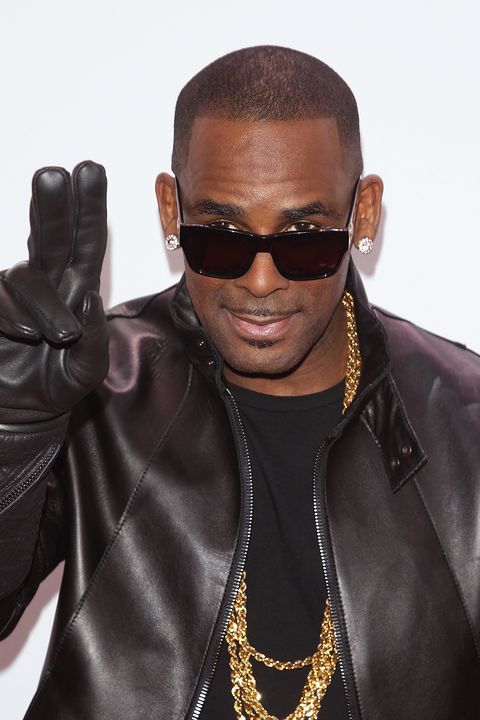
R. Kelly arrested for child pornography, 2002 R. Kelly was indicted on 21 counts of child pornography after a tape showing him having sex with and urinating on an underage woman was sent to the Chicago Sun Times. He plead not guilty to all charges. Since, dozens of women have claimed to have been held in a sex cult by the singer. The hashtag #MuteRKelly started spreading recently, and Spotify was the first company to actually take action.

Madonna and Britney Spears kissed on stage, 2003 During a 2003 MTV Video Music Award performance, Britney Spears and Madonna shocked everyone when they kissed on stage. Christina Aguilera was performing with them, too, and got a smooch from Madonna, but the cameras switched shots and their kiss wasn't televised. Videographers instead cut to a shot of Justin Timberlake's shocked face.
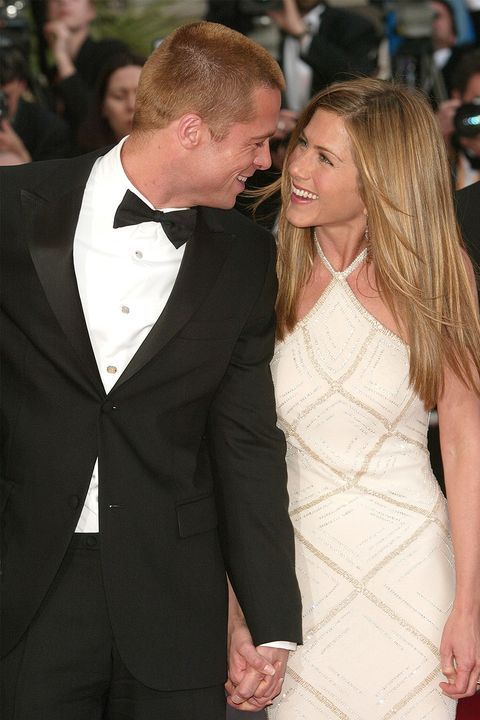
Brad Pitt and Jennifer Aniston announced their divorce, 2005 In January 2005, Brad Pitt and Jennifer Aniston made a shocking joint statement that revealed they were breaking up. "We would like to announce that after seven years together we have decided to formally separate. For those who follow these sorts of things, we would like to explain that our separation is not the result of any of the speculation reported by the tabloid media," they said in the statement. "This decision is the result of much thoughtful consideration," the statement continued. "We happily remain committed and caring friends with great love and admiration for one another. We ask in advance for your kindness and sensitivity in the coming months." It was thought that their divorce was the result of the scandalous affair Pitt had with Angelina Jolie while filming the movie Mr. and Mrs. Smith.

Britney Spears shaved her head, 2007 Also in 2007: Britney Spears shaved off all her hair. The "Oops I Did It Again" singer hit rock bottom, beating up a photographer's car with an umbrella just days after going at her head with a buzz cutter. That year was a rough year for Spears, and it started the famous meme: "If Britney Spears can make it through 2007, then I can make it through today."

Kim Kardashian's sex tape made public, 2007 Before she was married to Kanye West, Kim Kardashian was in a serious relationship with another singer: Willie "Ray J" Norwood. The couple reportedly filmed a sex tape back in 2002 during a trip to Cabo, Mexico, and it was released to the public five years later when Kim began getting more media attention for being friends with Paris Hilton (who also has a sex tape). Kim sued in an attempt to prevent the 41-minute film from being accessible, but it still found its way to the internet.

Heath Ledger found dead, 2008 In 2008, the 10 Things I Hate About You actor was found dead in his bed in New York city. The NYC Medical Examiner's Office later determined that the cause of death was an accidental overdose of prescription painkillers, including anti-anxiety meds and sleeping pills. The Dark Knight, starring Ledger as the Joker, was released that summer in theaters, and his performance won him a posthumous Oscar.

Chris Brown assaulted Rihanna, 2009 Back in 2009, Chris Brown beat up then-girlfriend Rihanna after she discovered a text message from one of Brown's former flames. The "Forever" singer reportedly punched her in the face, repeatedly bit her, and choked her, but not to the point of unconsciousness. In a 20/20 interview, Rihanna opened up about the incident. "It was ugly," she said. "I fended him off with my feet…but it was not like, it was not like a fight with each other. I just…I really just wanted it to stop."
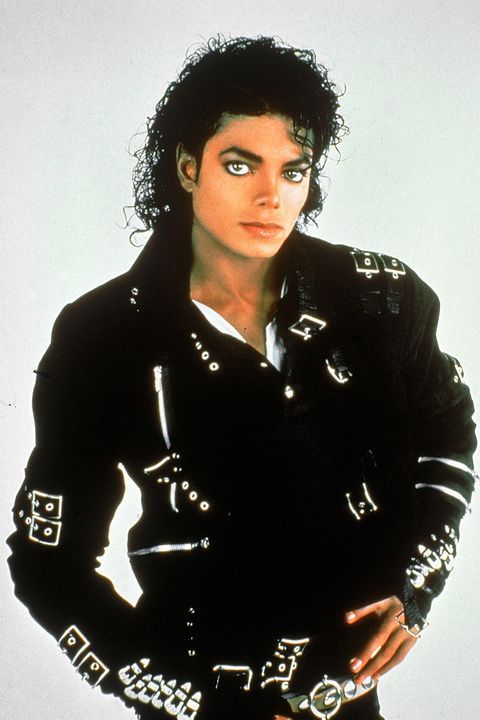
Michael Jackson killed, 2009 Michael Jackson was found dead on June 25, 2009. The cause? Surgical anesthetic Propofol, which was given to him by his personal doctor, Conrad Murray. Murray claimed to be injecting the King of Pop with the drug as a treatment for his insomnia. Jackson's death was ruled a homicide, and Murray blamed for negligent monitoring. He spent two years in jail for involuntary manslaughter.
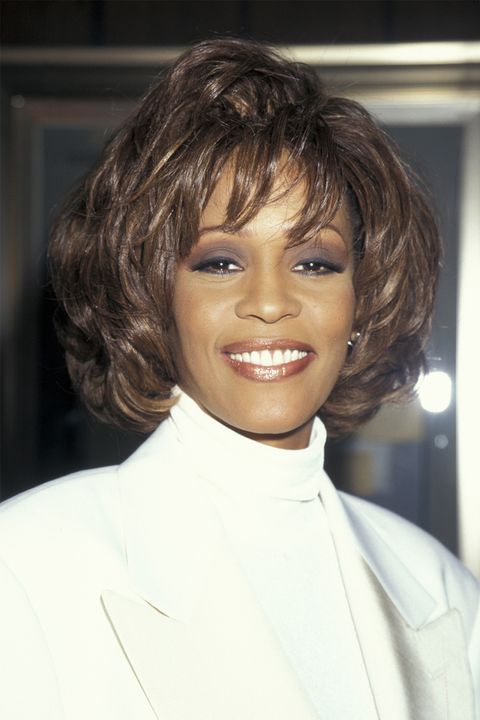
Whitney Houston found dead in a bathtub, 2012 The world was shocked when Whitney Houston was found dead in a bathtub at the Beverly Hilton Hotel in 2012. An autopsy revealed that the singer died from accidental drowning. Her body was found with numerous drugs in it, including cocaine, marijuana, Xanax, and Benadryl. Houston had heart disease, so it is thought that the disease mixed with cocaine contributed to her death.

Solange Knowles gets into elevator fight with Jay Z, 2014 Following the 2014 Met Gala, leaked surveillance video captured Solange Knowles physically fighting her brother-in-law Jay Z in an elevator at the Standard Hotel in New York City. Although there was no shortage of speculation on the internet, the Carter-Knowles family gave little information as to what actually went down. “They both acknowledge their role in this private matter that has played out in the public. They both have apologized to each other and we have moved forward as a united family,” they said in a statement given to the Associated Press. Although the family has remained incredibly mum’s the word on the situation, Jay Z broke his silence in 2017 to share that he and Solange truly have moved on. "We had one disagreement ever. Before and after, we've been cool. She's like my sister. I will protect her. That's my sister, not my sister-in-law. My sister. Period,” he said during an appearance on Rap Radar.

30 Kanye West, Kim Kardashian, and Taylor Swift feud over "Famous" lyrics, 2016 Kanye’s infamous “I’mma let you finish” at the 2008 Video Music Awards turned out to only be the beginning of his beef with Taylor Swift. In 2016, Kanye released the song “Famous” on his The Life of Pablo album, which explicitly mentions Swift in the opening: “I feel like me and Taylor might still have sex/Why? I made that bitch famous/Goddamn, I made that bitch famous.” Although Swift claimed she didn’t know about the song, Kim Kardashian decided to interject on her husband’s behalf. In a series of Snapchats, Kardashian leaked a recorded phone call between Kanye and Swift—Kanye shares a clip of the song for Swift’s approval, and the singer is heard saying, “Yeah, I mean, what's dope about the line is it's very tongue in cheek either way. And I really appreciate you telling me about it, that's really nice.” Swift’s response to the Snapchats? The singer claimed Kanye never shared the most offensive part of the lyrics with her. “Where is the video of Kanye telling me he was going to call me ‘that bitch’ in his song? It doesn’t exist because it never happened. You don’t get to control someone’s emotional response to being called ‘that bitch’ in front of the entire world,” she wrote on Instagram. To this day, the feud still remains a case of he-said-she-said.
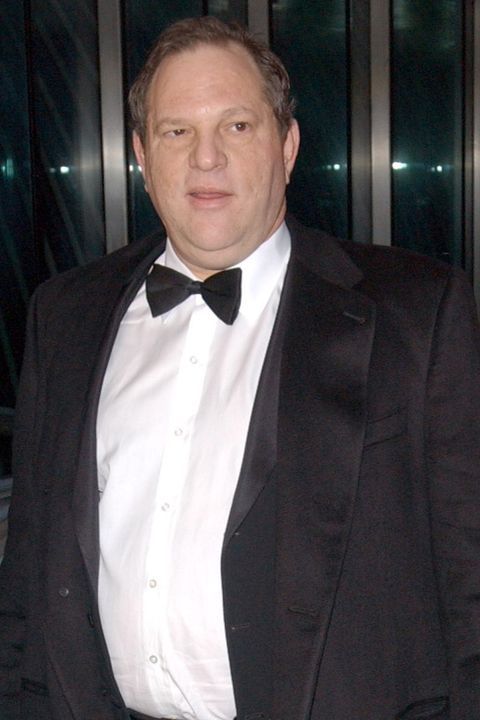
Harvey Weinstein accused of sexual assault, 2017 On October 5, 2017, Ashley Judd accused longtime movie mogul Harvey Weinstein of sexual harassment—a bombshell accusation that led to the historical Time's Up and #MeToo movements. Since the first allegations, a number of other actresses have come forward with their stories of being sexually harassed or assaulted by Weinstein. After eight months, he finally turned himself in to police in New York City.

20-year-old Kylie Jenner quietly gives birth to first child, 2018 After months of speculation, an uncharacteristically quiet Kylie Jenner took to Instagram to share that she had given birth to a baby girl on February 1. Although news of her reported pregnancy with boyfriend Travis Scott leaked in September 2017, the reality star chose to stay quiet through all nine months, never confirming the news. “I’m sorry for keeping you in the dark through all the assumptions. I understand you’re used to me bringing you along on all my journeys. My pregnancy was one I chose not to do in front of the world,” she wrote in an Instagram post announcing the news. The 20-year-old also released a home video, “To Our Daughter,” that gave fans a peek at her hidden pregnancy.
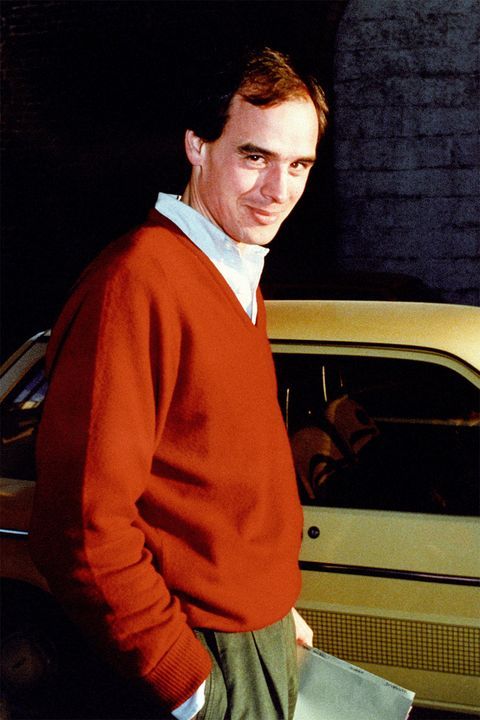
Princess Diana's phone calls with her lover, James Gilbey, released, 1992 In 1992 The Sun leaked a transcript of Princess Diana's secret phone calls with her lover, James Gilbey. Diana was still married to Prince Charles at the time, who was also reportedly having an affair of his own with now-wife Camila Parker-Bowles. Read the full article
#billclinton#bradpitt#britneyspears#heathledger#hollywoodcontroversies#jayz#jenniferaniston#kanyewest#kimkardashian#kyliejenner#maddona#michaeljackson#princecharles#princessdiana#rihanna#spotify#taylorswift#Timallen#whitneyhouston
2 notes
·
View notes
Photo

Today we remember the passing of Chris Squire who Died: June 27, 2015 in Phoenix, Arizona
Christopher Russell Edward Squire (4 March 1948 – 27 June 2015) was an English musician, singer and songwriter best known as the bassist, backing vocalist and a founding member of the progressive rock band Yes. He was the longest-serving original member, having remained in the band until his death and appearing on every studio album released from 1969 to 2014. In 2017, he was posthumously inducted into the Rock and Roll Hall of Fame as a member of Yes.
Squire was widely regarded as the dominant bassist among the English progressive rock bands, influencing peers and later generations of bassists with his incisive sound and elaborately contoured, melodic bass lines. His name was associated with his trademark instrument, the Rickenbacker 4001. From 1991 to 2000, Rickenbacker produced a limited edition signature model bass in his name, the 4001CS.
Squire was born on March 4, 1948 in the north west London suburb of Kingsbury, to Peter and Joanne Squire. He grew up there and in the nearby Queensbury and Wembley areas. His father was a cab driver and his mother a secretary for an estate agent. As a youngster Squire took a liking to Lena Horne and Ella Fitzgerald records belonging to his father, though his main interest was church music. At age six, he joined the church choir at St. Andrew's in Kingsbury as a treble with Andrew Pryce Jackman, a friend of his who lived nearby. The choir got to perform at St. Paul's cathedral. Their choirmaster, Barry Rose, was an early influence on Squire. "He made me realise that working at it was the way to become best at something". Squire also sang in the choir at his next school, Haberdashers' Aske's Boys' School, then located in Hampstead. He played the harmonica on his way home from school.
Squire did not consider a music career until the age of sixteen when the emergence of the Beatles and the Beat music boom in the early 1960s inspired him to "be in a group that don't use music stands". A school friend recommended that Squire take up the bass after pointing out his tall frame and large hands, thinking they were ideal for playing the instrument. Squire then purchased his first bass, a Futurama, which he described as "very cheap, but good enough to learn on." In 1964, on the last day before the summer holidays, Squire's headmaster suspended him and a friend for having their hair too long and they were given two shillings and sixpence to have it cut. Instead, they went home and never returned. After his mother took him to a recruitment agency and enquired for work related to music, Squire landed work selling guitars at a Boosey & Hawkes shop in Regent Street. He used the staff discount offer to purchase a new bass, a Rickenbacker 4001, in 1965
In September 1967, Squire joined Mabel Greer's Toyshop, a psychedelic group that included Peter Banks, singer Clive Bayley and drummer Bob Hagger. They played at the Marquee club where Jack Barrie, owner of the La Chasse drinking club a few doors down, saw them perform. "The musicianship ... was very good but it was obvious they weren't going anywhere", he recalled. One evening at La Chasse, Barrie introduced Squire to Jon Anderson, a worker at the bar who had not found success as the lead singer of The Gun or as a solo artist. The two found they shared common musical interests including Simon & Garfunkel, The Association and vocal harmonies. In the following days they developed "Sweetness", a track later recorded for the first Yes album.
As the band developed, Anderson and Squire brought in drummer Bill Bruford, keyboardist Tony Kaye and Banks for rehearsals. The five agreed to drop the name Mabel Greer's Toyshop; they settled on the name Yes, originally Banks's idea. The band played their first show as Yes at a youth camp in East Mersea, Essex on August 4, 1968. Squire spoke about the band's formation: "I couldn't get session work because most musicians hated my style. They wanted me to play something a lot more basic. We started Yes as a vehicle to develop everyone's individual styles." Squire developed a bass solo named "A Bass Odyssey".
In August 1969, Yes released their self-titled debut album. Martyn Adelman, who had played drums with Squire's first group, did the album photos. Squire received writing credits on four of the album's eight tracks—"Beyond & Before", "Looking Around", "Harold Land", and "Sweetness".
After Bruford left the band and was replaced by Alan White in July 1972, Squire altered his playing to suit the change in the band's rhythm section. He felt he was "playing too much, though I was never really sure. With Bill, the things that I did felt right ... With Alan, I found that I was able to play a bit less than before and still get my playing across".
Squire described his playing on "The Remembering (High the Memory)" from Tales from Topographic Oceans (1973) as "one of the nicest things I think I've ever played".
Squire was the only member to play on each of their 21 studio albums released from 1969 to 2014. He was seen as one of the main forces behind the band's music, as well as being "perhaps the most enigmatic" group member. Heaven & Earth was his final studio album.
While most of the band's lyrics were written by Anderson, Squire co-wrote much of their music with guitarist Steve Howe (with Anderson occasionally contributing). In addition, Squire and Howe would supply backing vocals in harmony with Anderson on songs such as "South Side of the Sky" and "Close to the Edge".
During the band's formative years Squire was frequently known for his lateness, a habit that Bruford often complained about. Because of this, Squire would frequently drive at unsafe speeds to get to gigs on time, once causing an accident on the way to a gig in West Germany after he fell asleep at the wheel, although nobody was injured. A posthumous commemorative brown plaque was titled in such a way as to make reference to his habitual lateness, namely " 'The Late' Chris Squire ".
As Squire, along with Alan White and Steve Howe, co-owned the "Yes" name at the time, the 1989 ABWH line-up without him (which contained Anderson, Bruford, Wakeman and Howe) could not record under that name.
Following Squire's death on June 27, 2015, the band's show on August 7 of the same year marked the first Yes concert ever performed without him. Former member Billy Sherwood replaced Squire during their 2015 North American tour with Toto from August to September 2015, as well as their performances in November 2015, as announced when the band first revealed Squire's disease in May 2015
On May 19, 2015, Yes announced that Squire had been diagnosed with acute erythroid leukemia, and would take a break from performing while receiving treatment.
In the late evening of June 27, 2015, Squire died from the illness at age 67 while still receiving treatment in his adopted hometown of Phoenix, Arizona. Yes' official Facebook page confirmed the news the next day. Tributes were paid by fellow musicians Brian May, Geezer Butler, Gene Simmons and Tom Morello, as well as bandmates Geoff Downes and Bill Bruford.
Squire's death was central to the song "Fragile" from the 2016 collaborative debut album between Jesu and Sun Kil Moon. In the song, Mark Kozelek recounts his experiences as a Yes fan, particularly in light of the death of a friend, also named Christopher. Squire was given a writing credit due to lyrics from his Yes composition "Onward" being quoted through backing vocals.
In April 2016 asteroid 2002 XR80 received an official permanent name from the International Astronomical Union in honour of Squire. Asteroid (90125) Chrissquire was discovered December 11, 2002 and is a main-belt asteroid with an orbital period of 4.08 years.
1 note
·
View note
Text
Locarno70

Locarno is a dream territory for every cinephile. Not only does the festival have two key competitions revolving around the present and the future, the iconic leopard is always keeping a watchful eye on the past. Yet, the past in cinema is never passé but rather a treasure map, and so we will follow our new Canadian contributor Justine Smith as she reads this map for us...
In 1946, the inaugural Locarno Film Festival was launched at the Grand Hotel with a screening of Giacomo Gentilomo's film O SOLE MIO from that same year. Since its earliest days, Locarno has devoted itself to a risky and political cinema, preferring to highlight new filmmakers from new regions than to reaffirm the status quo. Part of that legacy has been the celebration of filmmakers of the past through their retrospectives, as they have highlighted lost, forgotten, and under-appreciated directors.
For the 2017 edition of the festival, also the 70th anniversary of Locarno, the festival focused its main retrospective programming on French filmmaker Jacques Tourneur curated by Roberto Turigliatto and Rinaldo Censi. As always, the festival similarly paid homage to notable figures in front of and behind the camera, including Jean-Marie Straub, Mathieu Kassovitz, Michel Merkt, and José Luis Alcaine. In celebration of the festival’s 70th year, the organizers also took the opportunity to look back at some of the highlights of the past seventy years – devoting the Histoire(s) du cinéma: Locarno70 sidebar to Locarno’s history of discovering new voices.
As one of Europe’s major film festivals, Locarno stands out by focusing its programming on emerging and political filmmakers. Beyond the grandeur of the Piazza Grande, where Hollywood films and crowd-pleasing auteurs wow audiences, the selection is systematically challenging and boundary-pushing. The way these retrospectives function within the wider confines of the festival’s identity is worth a closer examination. While the Tourneur line-up, which is rich and spans an often overlooked career, needs special attention, perhaps the most interesting retrospective of the 2017 edition of Locarno is the focus on the festival’s own history. Indeed, as one of the three oldest film festivals in Europe, Locarno occupies a unique space to reflect and redefine its signature identity. But how exactly do they do that?
Comprising of eleven films, this profile on the festival’s history crosses over five decades and spans four continents. The selection of just eleven titles, as a means of exploring and reflecting on 70 years seems like an astronomical task, and in doing so, the festival seeks to establish its legacy on its own terms. As Carlo Chatrian, the festival’s Artistic Director, explains in the programme notes, “Locarno has always been a place for breaking with the past or turning the present upside down.” The final selection of Histoire(s) du cinéma: Locarno70 films includes Marco Ferreri and Isidoro M. Ferry's THE LITTLE APARTMENT / EL PISITO (1958), Éric Rohmer's THE SIGN OF LEO / LE SIGNE DU LION (1962), Adolfas Mekas's HALLELUJAH THE HILLS (1963), Raúl Ruiz's THREE SAD TIGERS / TRES TRISTES TIGRES (1968), Chadi Abdel Salam's THE NIGHT OF COUNTING THE YEARS / AL-MOMIA (1969), Villi Hermann's SAN GOTTARDO (1977), Aleksandr Sokurov's THE LONELY VOICE OF MAN / ODINOKIY GOLOS CHELOVEKA (1987), Catherine Breillat's 36 FILLETTE (1988), Michael Haneke's THE SEVENTH CONTINENT / DER SIEBENTE KONTINENT (1989), Todd Haynes' POISON (1991), Alina Marazzi's FOR ONE MORE HOUR WITH YOU / UN'ORA SOLA TI VORREI (2002).
There is something almost teasing about this statement, which feels post-modern in its unfixed view of time and identity. The past and the present do not exist in a fixed reality but are malleable as they shift and change through new perspectives and experiences. This reflection on the past highlights integral moments from film history, like the French New Wave and the rise of American independent cinema. More importantly, though, this selection of films opens up a conversation between past and present, reflecting on the nature of time itself.
For example, in 1969, Raúl Ruiz’s TRES TRISTE TIGRE was in competition at Locarno and won the Pardo d'oro prize. This film was the filmmaker's first feature and examined the underground world of Chile during the 1960s. Groundbreaking during its release, in 1989 Caryn James reflected on this debut, as a retrospective of Ruiz’s work was mounted in New York City, saying, “the film's restless hand-held camera movement and its hemmed-in atmosphere of Santiago's small-time underworld seemed as fresh when it appeared in Latin America as the New Wave had in France a decade before.” Perhaps no title from Locarno70's retrospective has a more interesting conversation with the present, as it is the only film whose director took part in this year’s competition, with THE WANDERING SOAP OPERA / LA TELENOVELA ERRANTE (1990/2017). This should raise eyebrows of those who are aware that Ruiz died in 2011 – in fact, the film was shot all the way back in 1990. It is only recently that Ruiz’s long-time editor and wife, Valeria Sarmiento, assembled the film for its Locarno world premiere.
While it is not unusual that previously unfinished films are released posthumously at major festivals, it is almost unheard of that they should run in major competition, in particular for a festival that prides itself on the showcasing cinema of the future. This decision is iconoclastic and challenging to audiences, and likely the jury as well. While after all the film did not walk away with an award, it garnered well-earned praise. The feature, which is inspired by soap operas, tackles the Chilean identity right at the edge of a transitionary moment – just one year before Pinochet has been ousted from office. The film is broken up into seven days, seven different parts with their own contained narrative (even if some are more theme-driven). Among the best ones are those that poke fun at radical politics, such as one where two activists in a car are shot by two activists, who are shot by two activists, who are shot by two activists, etc. Though generally appealing, THE WANDERING SOAP OPERA would certainly attract a niche audience in that Chilean viewers will walk away with a greater understanding and appreciation of the film’s nuances and allusions that an average viewer with only a basic knowledge of Chilean politics and culture.
Among the other filmmakers who were featured in both the retrospective and this year’s programming is Todd Haynes. He returned to the festival with WONDERSTRUCK (2017), a film that has already earned mixed praises at other festivals, yet his first feature, POISON, was screened to an almost packed house at the newly revamped GranRex and presented by the filmmaker. Todd Haynes’ introduction of his full-length debut articulated how our relationships with films can be transformed by time. Made in 1991, POISON was a tryptic exploration of homosexuality at the height of the AIDS crisis. Inspired by the poetry of Jean Genet, the film examines through three different narratives about a sense of loss within the gay community in the face of violence and disease. The director's reflection on his own debut was centered as much on the experience of loss he now associates with the film, as with the production itself.
Before the screening, Haynes listed the many collaborators who died since the film’s production, including his long-time editor James Lyons. POISON is, in many ways, an angry film addressing the gay community’s culpability in violence against each other, as well as the disastrous implication of AIDS. That rage has not been dispelled in a rewatching of the film, if anything, is heightened by the sheer scope the AIDS crisis has had on young, gay men. Within the scope of a current political climate, where a renewed AIDS crisis has hit areas of the United States such as Indiana, the film has continued and horrified resonance in our modern-day.
Still, not all the Histoire(s) du cinéma picks had such overt connections from the past to the present. In fact, one film felt so out of time that it seems a small miracle it was even made at all. Restored several years ago, THE NIGHT OF COUNTING THE YEARS is considered the greatest Egyptian film of all time but is still rarely screened, so of the many discoveries of this year’s festival, this may be among the brightest. Set in 1881, the film reflects on the true incidents of an isolated Egyptian tribe who have relied for centuries on a cache of Pharaohic mummies to make their fortune. After the death of a family patriarch, members of the tribe become greedy, selling off more than they should, and drawing attention to the authorities.
THE NIGHT OF COUNTING THE YEARS examines the cost of identity, tackling the question of what it means to be Egyptian in the modern world. The film feels infused by the dusty desert air, the characters and their homes coated in the past, their past, that they are willing to sell off to the highest bidder. With bright infusions of color, such as fuchsia flower petals laid upon a gravesite, the film has a mythical atmosphere: one in which the living can return from the dead. Looking towards the past, the lack of canonical power of THE NIGHT OF COUNTING THE YEARS is a reflection on the westernized perspective of great art. Cinema of the Middle East and Africa is often relegated to a second-class status as the values and questions addressing cultures and people unlike the European powers, have been deemed, consciously or not, as less worthy. While the vast majority of Locarno’s retrospective on its history has maintained a Western point of view, the presence of THE NIGHT OF COUNTING THE YEARS justifies apprehensions and questions related to the cinematic canon, which privileges certain voices and points of view over others.
One of the greatest joys of a festival like Locarno is that it is a place not only for discovery but doubt. In my two experiences at the festival, debates over merit are quickly overturned in favor of debate over the politics of cinema. The retrospectives, in particular, can serve as an important measure for current dominant perspective on film history and how we conceive important and new cinema.
If you are a film industry professional, you can watch films from Locarno FF on Festival Scope.
#Locarno FF#Locarno70#Pardo d'oro#Jacques Tourneur#Jean-Marie Straub#Mathieu Kassovitz#Michel Merkt#José Luis Alcaine#Histoire(s) du cinéma#Marco Ferreri#Isidoro M. Ferry#Éric Rohmer#Adolfas Mekas#Raúl Ruiz#Chadi Abdel Salam#Villi Hermann#Aleksandr Sokurov#Catherine Breillat#Michael Haneke#Todd Haynes#Alina Marazzi#Chilean cinema#General Pinochet#American cinema#AIDS#Egyptian cinema#French New Wave#cinephilia#festival report#Justine Smith
1 note
·
View note
Text
Tupac
Tupac
Tupac Shakur was one of the most dynamic, influential and self-destructive pop stars of the Nineties. The rapper's husky voice described his stark contradictions, setting misogyny against praise of strong women, hard-won wisdom against the violence of the "thug life" — words he had tattooed across his torso. The critical and commercial successes of his music (as well as his modest achievements as an actor) were continually overshadowed by his legal and personal entanglements. In Tupac's world, art and reality became tragically blurred, culminating with his 1996 murder in Las Vegas.
Shakur was the son of Black Panther Party members Billy Garland and Afeni Shakur (Shakur is Arabic for "thankful to God"), who was in jail (and later acquitted) on bombing charges while pregnant with him. Sometime after his birth, he was named Tupac Amaru, for an Incan chief whose name translates as "shining serpent."
Shakur spent his earliest years in the Bronx and Harlem, and at age 13 made his acting debut in a production of A Raisin in the Sun at an Apollo Theatre benefit for Jesse Jackson's 1984 presidential campaign. He spent the rest of his childhood moving around the country with his mother. He attended the Baltimore School of the Arts before dropping out and settling, at the age of 17, in Marin County, California.
The rapper then successfully auditioned to become a dancer and roadie for the rap group Digital Underground and simultaneously worked relentlessly on his own material. He appeared on that group's This Is an E.P. Release EP (1990) and Sons of the P (1991). In 1991 he signed with Interscope and released the album 2pacalypse Now (Number 64 pop, Number 13 R&B, 1992), a musical mixture of inner-city portraiture and messages of racial strength. An underground hit, the album spawned the single "Brenda's Got a Baby" (Number 23 R&B).
Shakur also became a successful actor in the early 1990s, appearing in Ernest Dickerson's Juice (1992) and Above the Rim (1994), and giving a critically acclaimed performance opposite Janet Jackson in John Singleton's Poetic Justice (1993). Despite a promising start and wide praise for his performances, the rest of his film work was far less acclaimed; he ended his acting career as James Belushi's sidekick in the mostly ignored Gang Related.
Shakur's second album, Strictly 4 My N.I.G.G.A.Z. (Number 24 pop, Number 4 R&B, 1993), yielded the hits "I Get Around" (Number 11 pop, Number 5 R&B, 1993) and "Keep Ya Head Up" (Number 12 pop, Number 7 R&B, 1993). He also released an album as part of the short-lived Thug Life group in 1994.
Even longer than Shakur's hit list, though, was his police blotter. In 1992 the rapper was arrested after a six-year-old California boy was killed by a stray bullet discharged during a scuffle between Shakur and two others. (A lawsuit filed by the boy's family was later settled out of court.) He was then charged in Atlanta with shooting two off-duty police officers in October 1993. Charges in both cases were dismissed. The following month Shakur and two members of his entourage were charged with sexual abuse following an incident in a New York luxury hotel.
In early 1994 he was found guilty of assault on Menace II Society codirector Allen Hughes and served 15 days in jail. By the end of the year, the rapper was found guilty of the sexual assault only a day after being shot by muggers in the lobby of a New York recording studio. He was later sentenced to one and half to four and a half years in prison. While his 1995 album Me Against the World (Number 1 pop, Number 1 R&B) headed to the top of the charts, Shakur headed for prison. Shakur became the first artist to reach Number 1 on the Billboard charts while serving a prison sentence. The hit single "Dear Mama" (Number Nine pop, Number Three R&B) suggested a depth of feeling that led some critics to reassess the rapper and his work.
By now Shakur was a lightning rod for a highly publicized West Coast vs. East Coast hip-hop feud. Shakur was released after serving just eight months of his sentence, the result of a parole arrangement and a $1.4 million bond paid by Death Row label CEO Marion "Suge" Knight. The rapper signed with Death Row in late 1995, soon releasing the dark, two-disc All Eyez on Me (Number 1 pop, Number 1 R&B, 1996). On the album, Shakur attacked his enemies with furious threats of violence, while speaking of his own early death as inevitable. The album also included "How Do You Want It" (Number 1 pop, Number 1 R&B), "California Love" (Number 6 pop) (with Dr. Dre and Roger Troutman), and "Hit 'Em Up," on which Shakur claimed to have slept with the Notorious B.I.G.'s wife, singer Faith Evans.
Then, on September 7, Shakur was shot near the Las Vegas Strip while riding in the passenger seat of Knight's BMW. The shooting came about two hours after a scuffle that involved Shakur and Knight in the lobby of the MGM Grand Hotel (an incident that ultimately led to Knight, 31, being handed a nine-year prison sentence for violating his parole). Six days later Shakur died from his injuries. He was 25. No arrests were ever made. In addition, despite calls within the hip-hop community to halt the violence, the Notorious B.I.G. was killed in a similar fashion six months later. No murder charges have been filed in either murder.
Like Elvis Presley and Jimi Hendrix before him, Shakur was soon the subject of a flood of posthumous album releases (and rumors suggesting that he faked his death). The first release was The Don Killuminati: The 7 Day Theory (Number One pop, Number One R&B, 1996), released under the pseudonym Makaveli. It was followed by R U Still Down? (Remember Me) (Number Two pop, Number 1 R&B, 1997), released on Amaru/Jive, an imprint headed by his mother.
In 1997 his estate began a war of lawsuits against Death Row, complaining of $150 million in unpaid royalties, demanding the return of more than 150 unreleased master recordings, and a voiding of the rapper's contract with the label. A 1998 settlement awarded the tapes to Shakur's estate, which sanctioned the release that year of Greatest Hits (Number Three pop, Number One R&B); it includes "Unconditional Love" (Number 73 R&B, 1998) and "Changes" (Number 32 pop, Number 12 R&B, 1999). "Do for Love" (Number 21 pop, Number 10 R&B, 1998) appears on R U Still Down? In 2001 the fourth posthumous collection, Until the End of Time, debuted at Number 1.
With 2002 came another subpar collection, Better Dayz, a guest-filled affair that combined leftover verses and remixes from Shakur's "Makaveli" period. The collection did spawn one hit single, "Thugz Mansion" with Nas and J. Phoenix, and fans' insatiable appetite for unreleased Tupac material helped Better Dayz reach double platinum status. The soundtrack to the documentary Tupac Resurrection followed in 2003, with producers like Eminem and Johnny "J" remixing tracks from throughout Tupac's career. Eminem's production also served as the backbone for 2004's Loyal to the Game, a collection of unreleased Tupac verses combined with guest spots from the likes of Elton John, G-Unit and Slim Shady himself. Loyal to the Game topped the Billboard Top 200 upon its release.
To commemorate the 10th anniversary of Shakur's death, 2006's Pac's Life fused 13 more unreleased Shakur recordings with top notch production from Swizz Beatz and Sha Money LX. T.I. and Ashanti contributed to the album's most notable single, "Pac's Life," while Tupac admirers like Snoop Dogg, Ludacris and Chamillionaire also appear. The two-part greatest hits collection Best of 2Pac followed in 2007 with a minimal chart impact. In 2008, the rights Death Row's master tapes were sold to new ownership, and with it another batch of unreleased Tupac recordings were unearthed, all but ensuring more posthumous releases in the new decade.
0 notes
Text
Joey Ramone - Stop Thinking About It
#Joey Ramone#Don't Worry About Me#Stop Thinking About It#Label:#Sanctuary Records#Released:#2002#Genre: Rock & Roll Punk#Don't Worry About Me is the debut album released by Joey Ramone as a solo artist#] It was released posthumously in 2002 less than a year after his death#USA
13 notes
·
View notes
Text
Joey Ramone - Searching For Something
#Joey Ramone#Don't Worry About Me#Label:#Sanctuary Records#Released:#2002#Genre: Rock & Roll Punk#Don't Worry About Me is the debut album released by Joey Ramone as a solo artist#] It was released posthumously in 2002 less than a year after his death#USA#Searching For Something
9 notes
·
View notes
Text
Joey Ramone - What A Wonderful World
#Joey Ramone#Don't Worry About Me#Label:#Sanctuary Records#Released:#2002#Genre: Rock & Roll Punk#Don't Worry About Me is the debut album released by Joey Ramone as a solo artist#] It was released posthumously in 2002 less than a year after his death#USA#What A Wonderful World
9 notes
·
View notes
Text
Joey Ramone - Mr. Punchy
#Joey Ramone#Don't Worry About Me#Mr. Punchy#Label:#Sanctuary Records#Released:#2002#Genre: Rock & Roll Punk#Don't Worry About Me is the debut album released by Joey Ramone as a solo artist#] It was released posthumously in 2002 less than a year after his death#USA
10 notes
·
View notes
Text
Joey Ramone - Like A Drug I Never Did Before
#Joey Ramone#Don't Worry About Me#Label:#Sanctuary Records#Released:#2002#Genre: Rock & Roll Punk#Don't Worry About Me is the debut album released by Joey Ramone as a solo artist#] It was released posthumously in 2002 less than a year after his death#USA#Like A Drug I Never Did Before
5 notes
·
View notes
Text
Joey Ramone - Spirit In My House
#Joey Ramone#Don't Worry About Me#Label:#Sanctuary Records#Released:#2002#Genre: Rock & Roll Punk#Don't Worry About Me is the debut album released by Joey Ramone as a solo artist#] It was released posthumously in 2002 less than a year after his death#USA#Spirit In My House
5 notes
·
View notes
Text
Joey Ramone - I Got Knocked Down (But I'll Get Up)
#Joey Ramone#Don't Worry About Me#I Got Knocked Down (But I'll Get Up)#Label:#Sanctuary Records#Released:#2002#Genre: Rock & Roll Punk#Don't Worry About Me is the debut album released by Joey Ramone as a solo artist#] It was released posthumously in 2002 less than a year after his death#USA
1 note
·
View note
Text
22 years ago today
'Don't Worry About Me' is the first album released by Joey Ramone as a solo artist, released posthumously on this day in 2002, less than a year after his death.
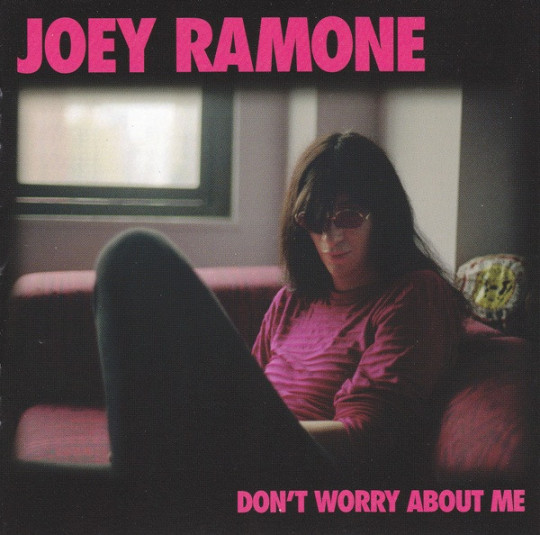
#punk #punkrock #punklegend #joeyramone #dontworryaboutme #history #punkrockhistory #otd
32 notes
·
View notes
Audio
Joey Ramone - Don't Worry About Me
#Joey Ramone#Don't Worry About Me#Label: Sanctuary Records#Released: 2002#Genre: Rock & Roll Punk#Don't Worry About Me is the debut album released by Joey Ramone as a solo artist#] It was released posthumously in 2002 less than a year after his death#USA
106 notes
·
View notes